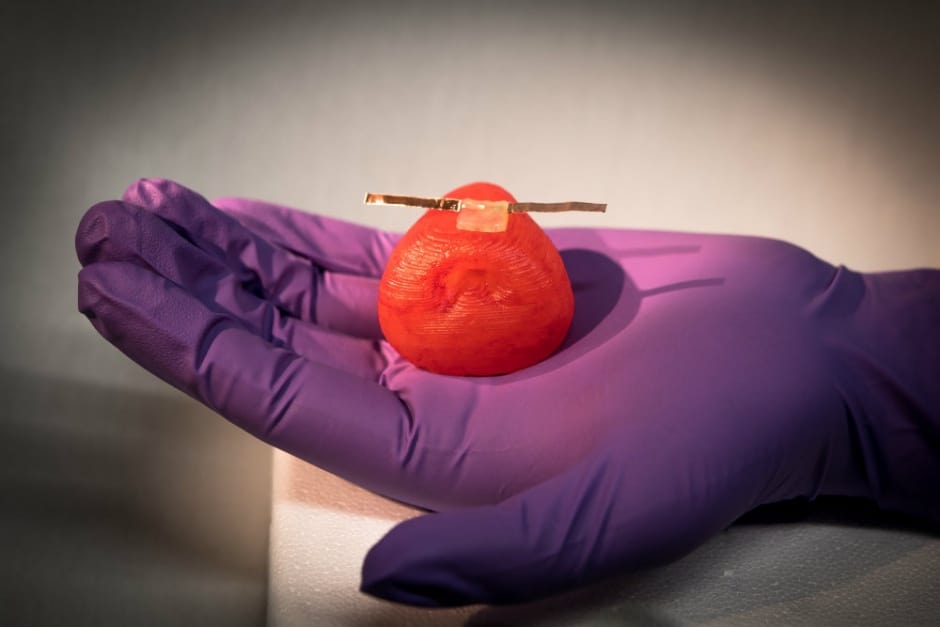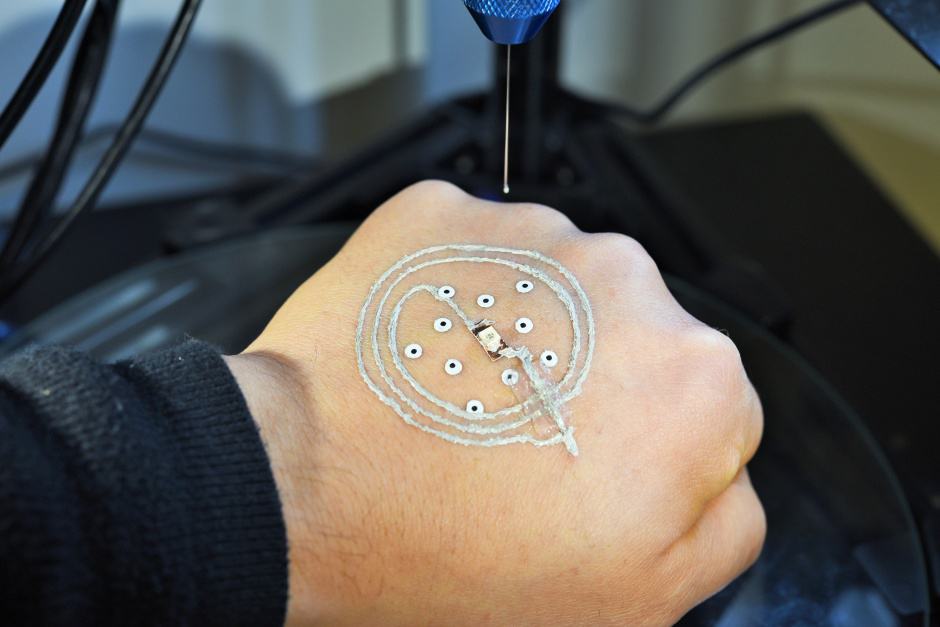While you might not expect the engineer to be a resource in the battle against prostate cancer, additive manufacturing technology is taking steps to make prostate – and other organ – surgeries safer by printing life-like, patient specific models that look and feel like the real things.
Our research team, led by the University of Minnesota, printed artificial organ models using a custom-built 3D printer and specially designed silicone-based inks, which can be fine-tuned to match each individual patient’s prostate tissue. Created from the patient’s MRI scan and matched to actual patient tissue samples, these new organ models look and feel like actual prostates – an improvement over existing versions, which are generally hard plastic or rubber.

Surgeons can stitch and suture the life-like models as they would the actual organ, helping them to better prepare for complicated surgeries. We’ve also attached 3D printed soft sensors to the models in order to provide real-time feedback to the surgeon. The quantitative data indicates the amount of force they are using on the model during the practice surgery, so they know exactly how much pressure to exert in the operating theatre to avoid damaging the organ.
It is essentially a real-life game of ‘Operation’, but instead of avoiding the buzzer, the surgeons are perfecting their sutures and procedures in advance to help ensure a more accurate surgery and improved outcomes for patients.
From Operation to Human X
This initial exercise in printing synthetic prostates is a first step – in the future we hope to print life-like models of more complex organs using multiple materials and, eventually, print the electronic sensors along with the organs. Eventually, this technology could be transferred directly to the operating room, to be used by surgeons worldwide.
If we can create synthetic organs for surgery rehearsals now, there’s no reason that – down the line – we won’t be able to print functional patient-specific organs
It sounds a bit like science fiction, but I call it Human X. If we can create synthetic organs for surgery rehearsals now, there’s no reason that – down the line – we won’t be able to print functional patient-specific organs, perhaps with enhanced capabilities over what biology has provided us.
And while it may still be a few years before this is a reality, we are currently experimenting with 3D printed electronics – both on the body to help dress wounds and implement bio-medical devices, as well as to print active electronics directly on the skin.
Indeed, the same printer that uses silicone-based inks for creating artificial organs can be used to print electronics directly on the body. By printing a sensor directly on a moving hand, you can enable a new paradigm where people can carry 3D printers around in backpacks and print electronics directly on their bodies. Before you start thinking that this is something out of Minority Report, this technology could be useful for performing surgeries at site of an accident, or even to print your next smart watch directly on your wrist.

It’s all about bringing the printer to the patient rather than the other way around – saving precious minutes in the case of a medical emergency. Or providing soldiers in the field with the ability to power equipment through a solar panel on their hand. Or giving family members the opportunity to print electronics directly on themselves.
It’s all in the inks
The technology behind these ‘Human X’ developments is being developed alongside the inks and materials that will make it safe, while still retaining their functionality. For instance, temperature sensitivity is essential when it comes to printing directly onto the skin, so we need to create an ink that cures at room temperature.
I believe the reality of 3D printing will exceed the hype over the coming decades
While we’re on the topic of inks, our group can also print semiconducting particles to generate active electronic devices versus passive conductors. We recently received a patent on this technology. The electronics industry is built upon semiconducting materials and devices, so being able to incorporate semiconducting inks into 3D printers and reliably print semiconducting devices is a key enabler of next-generation 3D printed electronics.
From tangible, life-like organ models to on-body electronics and smart biomedical devices, it all comes down to the properties of the inks and the controls of the printer to mark the difference between reality and science fiction. With all this interdisciplinary excitement, I believe the reality of 3D printing will exceed the hype over the coming decades.
Michael McAlpine - Benjamin Mayhugh Associate Professor of Mechanical Engineering, University of Minnesota
Do you want to hear more on life-like 3D printed organs, sensors, semiconductors and inks? Join Michael and a raft of additional expert speakers from 10-12th July at this year’s Additive International (formerly the International Conference on Additive Manufacturing & 3D Printing)





Nanogenerator consumes CO2 to generate electricity
Whoopee, they've solved how to keep a light on but not a lot else.